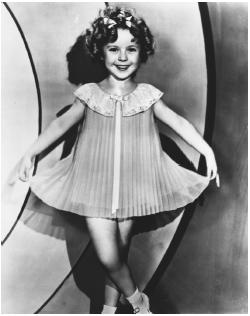Girl Antagonists in Cinema
Since the birth of cinema, the stereotype of the female as victim has been explored in countless ways. Females on screen, much as in real life (and to this day) exerted their limited power (beauty, charm, maternal sway) to manipulate those with power into giving them what they desired. And in the 1930’s, no actress epitomized the young female ideal more than Shirley Temple.

In all of her roles, Temple represented the feminine traits that were desirable in a young girl/woman-to-be: beauty, intelligence, social graces, and possessing a strong moral compass.
Noir films and the sinister Femme Fatales of the 1940’s/50’s crossed over from Europe and opened the doors for mainstream American audiences to witness the development of a new type of young female character: The Girl Antagonist.
She has no allegiances, rebukes any boxing in of social norms. She manipulates the common stereotypes that come with her identity – The Young Girl: Innocent, Meek, Naive. She does not seek protection and in fact is a destructive force. Regardless of who may be hurt in the process (like the typical male antagonist) she will use any subversive means to achieve her goals.
Twenty years later, Patty McCormack’s performance as the diabolical Rhoda Penmark represented the anti-thesis to Shirley Temple’s remake of The Poor Little Rich Girl.
Rhoda became the prototype for a new breed of young female characters in cinema. She was physically robust (not sickly, delicate), precocious, calculating , able to execute complex plans and to confidently defend her actions.
Twenty years after The Bad Seed, in 1976, the most provocative portrayal of the young female antagonist to date chilled audiences around the world in German filmmaker Fassbinder’s Chinese Roulette.


Angela (in a haunting performance by Andrea Schober) is the crippled daughter of two separated but still-feuding parents. She plays with her dollies, quotes from Rimbaud, and seeks revenge by orchestrating a truth-telling game that has violent repercussions. Her classic Disney-esque cherubic facade opens and closes the film, a clue to her pivotal importance.
Since the birth of Angela, I feel that no young female antagonist has surpassed her in American cinema.
Examples of American Cinema Girl Antagonists
Ivy (Drew Barrymore), an orphan from a poor family, meets loner Sylvia Cooper (Sara Gilbert), eventually moving out of her aunt’s home and into the Cooper household where she both seduces Sylvia’s father and tries to kill her mother.
Wealthy and precocious 14-year-old Darien (Alicia Silverstone) falls for a journalist who rents a room in her family’s mansion, and when her unwanted attention is not reciprocated she becomes obsessed and proceeds to destroy every facet of his professional and personal life.
Through systematic physical and psychological torture, Hayley (Ellen Page) manipulates a cyber-pedophile into believing she has castrated him.



